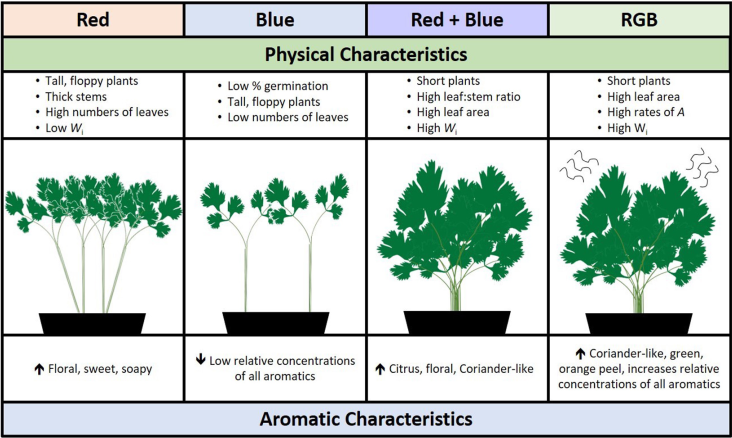
The industry of LED grows light needs a more accurate and detailed biological basis
The global horticultural lighting market is projected from USD 2.3 billion to 6.0 billion by 2025, the whole indoor farming market was valued at USD 23 billion in 2016 and is projected to reach $ 40.25 billion by 2022. [1] More and more competitive companies have joined the game, thousands of thousands of high-valued and innovative lighting fixtures have been made. But do these kinds of the product provide the most suitable light for various kinds of plants?
No matter what kind of lighting fixture the customers get from their company or supplier, the key point is always to focus on how much effective radiation their various plants get from the light sources, in other words, is the spectrum from the light sources match the growth spectrum of various plants?
LED lights are considered as the best option for growers to maintain profitability in a highly competitive market by high efficiency and multi SPD possibility. Advancements in the availability and specificity of LED have facilitated trait modification of high – value plants.
The below spectrum A and spectrum B in figure 1 are the most common plant-growth LED spectrum worldwide. The PAR curve represents the photosynthetically active radiation, the basis of a plant’s spectral response of the photosynthesis. Spectrum A is the most common horticultural lighting products, some people always consider it as the “full-spectrum”. Companies always focus on improving the efficiency of photosynthetic photon efficacy and photosynthetic photon flux and anti-sulfuration process. The idea of spectrum B aims to improve the ratio of the 660nm red radiation to more approximate the PAR curve.

Figure. 1.1 Photosynthetic sensitivity curve (PAR curve)

Theoretically speaking, the spectral power distribution of light sources cover more area of PAR curve on the spectrum, the better growth performance may the plants have. This might suitable for the green-leaves plant, and the purpose of growing these plants is harvesting the leaves products, such as salad, cabbage, lettuce. However, what if you want to grow some plants with other characteristics besides the green leaves. Generally speaking, the spectrum C and D are always considered to improve the blue and red ratio on the spectrum, and match β-Carrotine or Phytochrome A, B curve, but there is controversy in the biologist.
Here is a typical example, if your plants are aromatic herbs, how could you find the most suitable grow light? The spectrum A, B, C, or spectrum D?

Figure. 2 the schematic summarizing the overall impact of specific wavebands on the morphological and aromatic characteristics of aromatic herbs growth under R, B, RB, RGB LED light sources. The Wi represents water-use efficiency. [2]
The aroma of these herbs is critical to its product value. Plants grown under only Red wavelengths provide unsatisfied stems and lower water-use efficiency. Even worse growth behavior of plants under the blue spectrum. RB-spectrum provides suitable growth for the herbs but too much stem ratio. While RGB supplements may yield the best aroma but not a visually appealing plant. This can allow growers to target a niche product like custom vertical farming or microgreens. Although the growth spectrum is an adaptive response that linked to numbers diverse biological roles, it still can suggest Is that NONE of the spectrums in figure.1 is the best option for the herb’s cultivation.
The suitable growth spectrum might be the R+G+B combination. (Spectrum E in Figure. 3)

Figure.3 Spectrum E
This case is a small example and not tremendously precise. The point of the whole article focusing on the choosing “right” spectrum for specific plants. People need to pay more attention to the so-called “suitable” spectrum for all plants on the market. The practical application of LED growing light should be focusing on a more specific and strong biological basis.
Reference
- Grow Lights Market by Offering (Hardware, and Software & Services), Installation Type (New and Retrofit), Application (Commercial Greenhouses, Vertical Farming, Indoor Farming, and Others), Lighting Type, Watt, and Geography - Global Forecast to 2025 From Marketsandmarkets
- Growth Spectrum Complexity Dictates Aromatic Intensity in Coriander (Coriandrum sativum Lorna McAusland, Mui-Ting Lim, David E. Morris, Hayley L. Smith-Herman.

Leave a comment